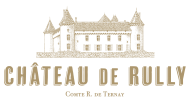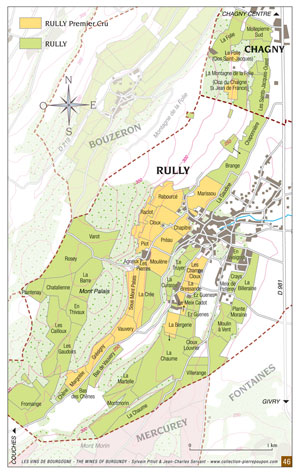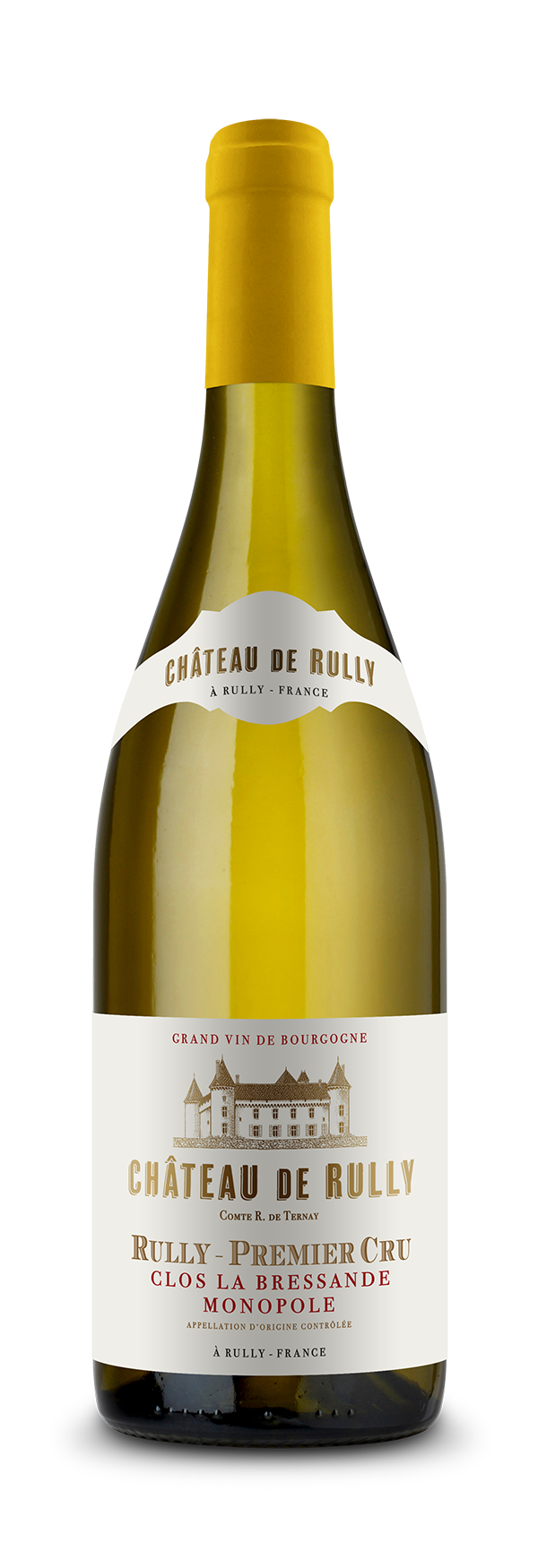 Origin
Origin
This ancient fortified Chateau is dating back to the 12th Century and has remained the property of the same family since its origins. This is today the symbol of the village of Rully, in the Côte Chalonnaise, all in the South of Burgundy. The estate vineyards extend over 12Ha.
Rully is a communal appellation made up of 23 Premiers Crus climats. White Rullys spread on a 261 ha area - including 68 ha of Premiers Crus - whereas red Rullys are produced on a 116 ha area of which 28 are Premiers Crus.
Rully was named after a rich roman, Rubilius, who built a villa and founded the village during the roman occupation. It was at first named Rubiliacum and it evolved through the years to become the current Rully.
The name "La Bressande" could mean "the land facing the Bresse" or the land belonging to or grown by an inhabitant of the Bresse.
La Bressande is a 2.6 ha monopoly.
 Terroir
Terroir
The Chardonnay grape really blossoms on this clay and limestone soils: it brings out all its freshness and fruity aromas. The vines in the Clos have the ideal exposure: the South-East orientation allows the vines to get the maximum amount of sunlight and heat, resulting in good maturity levels and a good balance between sugar and acidity.
 Grape variety
Grape variety
 Tasting notes
Tasting notes
Color : elegant bright gold.
Nose : powerful floral and honey aromas with discret and very elegant wood notes.
Palate : a rich and generous wine showing yellow fruits aromas (peach) with a great structure in the mouth carried by delicate, racy woody notes and a very long persistency.
 Food and wine pairing
Food and wine pairing
Enjoy ideally with cold cuts, seafood (shellfish, crustaceans), hot first courses, fine fish or white meats in sauces. It can also beautifully enhance fine, dry or goat cheeses.
 Serving suggestions
Serving suggestions
Serve between 12-14° C. (54-57°F.).
 Ageing potential
Ageing potential
This great wine will perfectly age for 5 years in good conditions.
 Vinification and maturing
Vinification and maturing
The Monopole Clos La Bressande plot was harvested on September 27 and 28.
Grapes were hand harvested, carefuly sorted and put into boxes, to avoid bruising or crushing.
Once at the winery, the grapes go in a bladder press where they are squeezed from the inside to get the best quality of juice with a minimal exposure to oxygen. Then, the must is left to settle for 24 hours to clarify before starting fermentation.
Vinification takes place for a part in stainless steel tanks. Once the alcoholic fermentation is achieved, the wine is casked for an 8-month ageing period in 228L oak barrels (including 25% new oak) on thin lees. Stirring twice a month until the beginning of the malolactic fermentation, in order to prevente the wine from oxydating and help to develop more complexity.
 Vintage : 2021
Vintage : 2021
Nature certainly set a challenge for the winegrower and the winemaker with this vintage.
It began with very warm temperatures at the end of February which led to an early bud break.
The historic frost in April then destroyed young shoots that had emerged too early, significantly affecting the future harvest. Changing weather continued to characterize the vintage through to the harvests.
There were spells of rain from May to mid-August, obliging winegrowers to be constantly on the alert. The only periods of relative calm were during flowering, which took place in good conditions for the formation of the future fruit, and the véraison (colour change), which benefited from the return of the sun from mid-August.
The vagaries of the weather contributed to the development of outbreaks of disease, which were contained thanks to the tireless efforts of our winegrowers. In spite of this, considerable sacrifices had to be made to ensure a high level of quality, and rigorous sorting of the fruit in the vineyard and on arrival at the winery was necessary.
This vintage also required a major technical effort. The vinifications had to be carried out with meticulous attention and precision with a particular care over the extraction of colouring matter, the balance of the structure and the aromatic expression of the red wines, and of the freshness, balance of acidity and aromatic potential of the white wines.
 Awards
Awards
May 2024 -
JamesSuckling.com -
90pts






